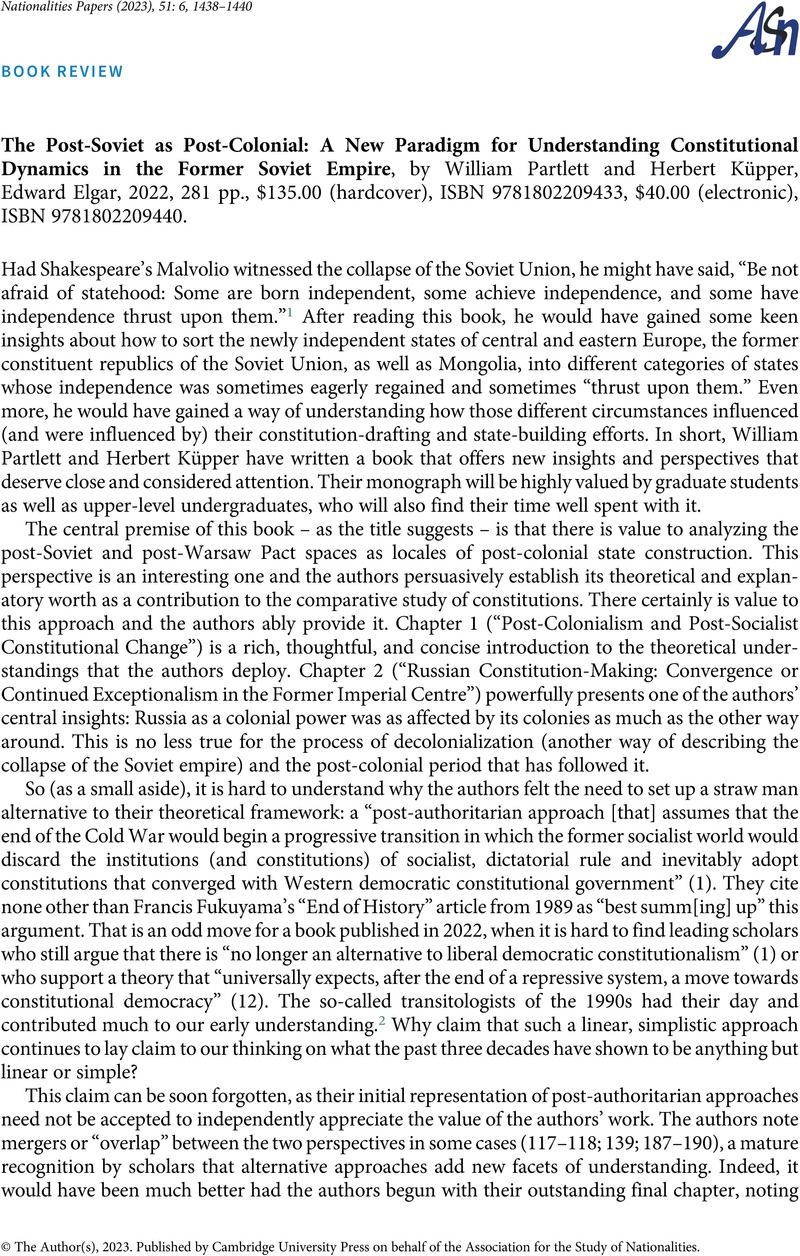No CrossRef data available.
Article contents
The Post-Soviet as Post-Colonial: A New Paradigm for Understanding Constitutional Dynamics in the Former Soviet Empire, by William Partlett and Herbert Küpper, Edward Elgar, 2022, 281 pp., $135.00 (hardcover), ISBN 9781802209433, $40.00 (electronic), ISBN 9781802209440.
Review products
The Post-Soviet as Post-Colonial: A New Paradigm for Understanding Constitutional Dynamics in the Former Soviet Empire, by William Partlett and Herbert Küpper, Edward Elgar, 2022, 281 pp., $135.00 (hardcover), ISBN 9781802209433, $40.00 (electronic), ISBN 9781802209440.
Published online by Cambridge University Press: 24 March 2023
Abstract
An abstract is not available for this content so a preview has been provided. Please use the Get access link above for information on how to access this content.

- Type
- Book Review
- Information
- Copyright
- © The Author(s), 2023. Published by Cambridge University Press on behalf of the Association for the Study of Nationalities
References
Notes
1 William Shakespeare, Twelfth Night, Act III, Scene 4, lines 36–40.
2 The very best of these early contributions is absent from Partlett’s and Küpper’s bibliography: Juan Linz and Alfred Stepan, Problems of Democratic Transition and Consolidation: Southern Europe, South America, and Post-Communist Europe (Johns Hopkins, 1996).
3 Kahn, Jeffrey, Federalism, Democratization, and the Rule of Law in Russia (Oxford University Press, 2002)CrossRefGoogle Scholar.



